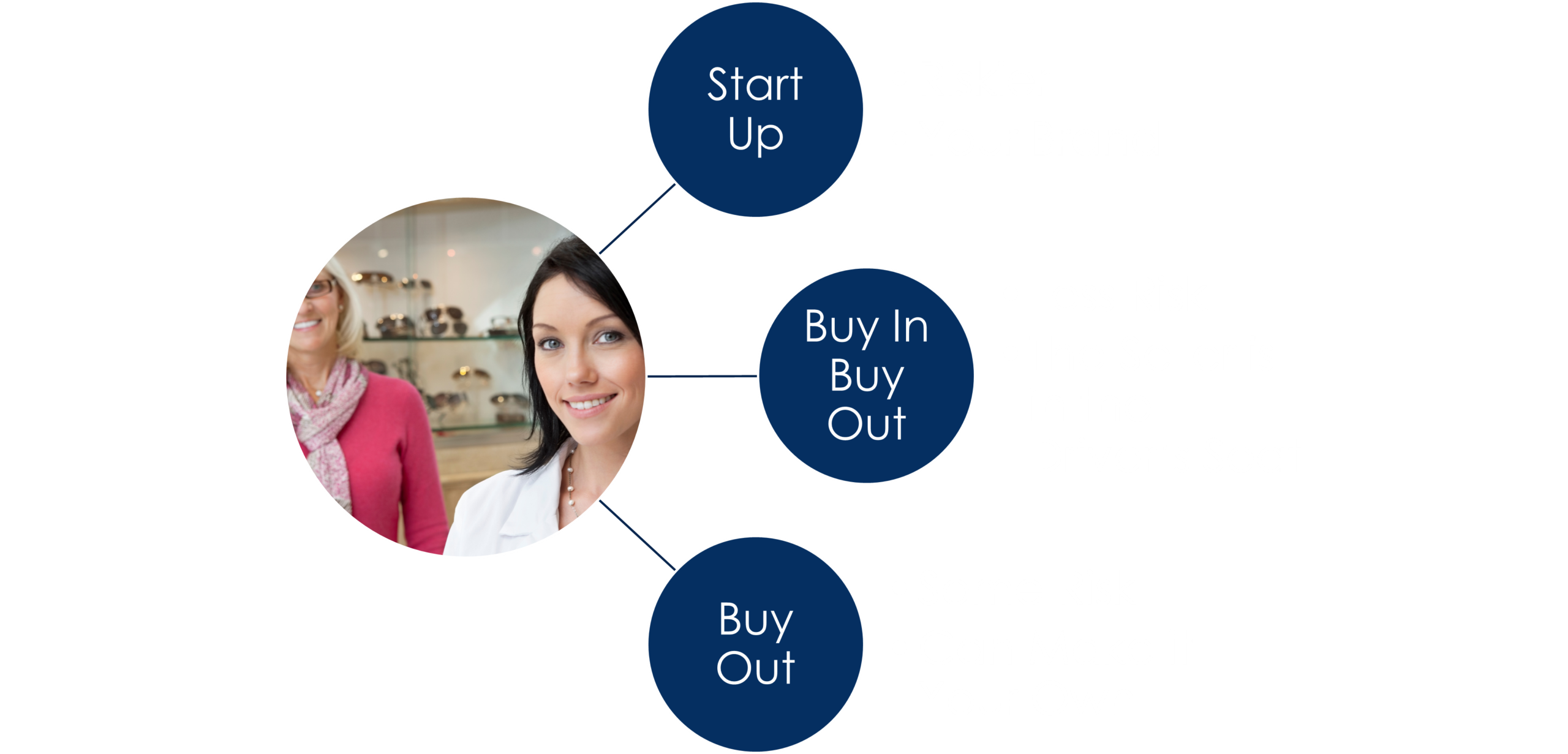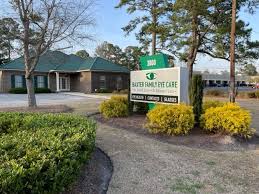Private practice optometry is alive and well. A SWOT analysis by Review of Optometry Business pointed out the four biggest strengths of private practice that involve some of the most rewarding aspects of private practice. Our strength lies in our relationships – with each other, the patients, and the community. In fact, COVID was a challenging and difficult period for eye care, but private practices emerged busier, more efficient, and in more demand than ever before. When the crisis was in full swing, we were there. Most chains were closed or on reduced staffing and hours.
Private practice is defined as a business entity entirely owned and operated by practitioners. Most optometrists are required to be “independent” by state law and can’t be employed by a retail corporation, but a private practitioner is a sovereign business owner.

To enter private practice there are really three ways:
1. If you have an entrepreneurial spirit and hope to carve out your own brand and vision, a startup is the way to go.
2. The less risky option is to get in with an established practice and eventually buy in and buy out the current owners.
3. Finally, is the buyout. Usually done over a shorter length of time, the new practitioner comes in and buys out the established one.
All options have various risks and costs involved.
Optometry careers have the added benefit of being able to fulfill dreams of business ownership. Every year hundreds of practices start cold with a vision and a lot of hard work and dedication. The rewards are great – good return on investment, decent earning potential, and control of your own destiny. The riskiest of the three pathways, a startup can reduce risk with good homework and planning…
The most important element that can determine the success of a new business is the location. Exposure can provide much needed advertising and high traffic can put you where the action is. Keep in mind however, the better the location, the higher the cost – you get what you pay for right? The tricky part is securing a facility that is big enough for current and future needs.
Costs of a startup can vary greatly too.
The total price tag can be from $250,000 – 500,000 for a rental to well over a million if you own the facility. Most lending institutions will require projections as part of the process for securing money. We budget 25% for cost of goods sold (a percentage of every dollar that goes to vendors like labs, frames, contact lenses, accessories, supplements, and more,) 20-25% for staffing and as much as 30% for overhead. Costs are higher in the beginning, but as the practice grows and cash flow improves, overhead costs will level out and be better controlled.
Last but not least, behind every successful practice is a motivated and well-trained team.
Relationship is the strength of private practice; it is the reason we are thriving. People with good people skills is mission critical. Keep in mind that pay is not proportional to performance. Dedicated team members that are given opportunities to learn and make a difference with quality, challenging work are happier and more productive. Avoid hiring “job hoppers” or people whose lifestyle dictates a change in work style.
Being your own boss means taking the risk, setting the pace, and driving the business forward.
Entrepreneurs have the best experience in private practice because they set their own hours, practice the way they want to, and will enjoy a return on the asset in the form of income and realized gains (selling the asset for more than it cost.)
Rely on family to help.
A spouse that is the “bread winner” or a rich uncle that gives you money- whatever the case may be, rely on the support of others to help your dream come true.
A good business plan will include a detailed look at who will run the business and how, the marketing philosophies and strategies that will ensure growth, and the plans and adaption that will sustain the business well into the future. A good plan will also include capital needs. Capitalizing includes operating money in two forms – cash and the ability to borrow or “debt capital.” How much capital you will need depends on your situation (remember the rich uncle) but generally speaking plan for two years of operating expenses.
One of the least risky pathways is the buy in and buy out.
The practice may have a group of partners or a sole owner. Generally speaking, the practitioners who have invested time and effort into building the practice are offered the opportunity first. Sellers are looking for good leaders as well as good practitioners to carry on their businesses.
The first consideration should be how much does it cost. Has there been a formal and professional valuation done? Be sure that an expert in the eye care industry is used – most CPAs and attorneys have little to no experience in valuing a business. What is the equity position, holding, or percentage of ownership? Is that OK with you? Keep in mind that a good stock purchase agreement is just as diligent in outlining how to leave a partnership as it is in how to get into one. In fact some people find the process of crafting a stock purchase agreement emotionally taxing as you plan for each “worst case scenario.”
Think long-term.
A buy in and buy out is a long-term approach to business ownership. The risks are lower because you share the risks with others, but the rewards are further down the road. Think of wealth building in three ways:
1. Appreciation – Your asset grows as the practice grows just like any investment
2. Dividends – a share of the profits by ownership percentage
3. Realized Gains – the difference between the selling price and cost when you “cash in” your equity
A riskier approach to practice ownership is the “buy out.”
With less risk than a startup, a buy out allows you to take control of an established practice. Some practices are “fixer uppers” because the owner has scaled back their production or allowed the business to get behind and not stay relevant. These practices can be quite rewarding because they provide a steady cash flow and useful systems while giving you the opportunity to change the practice to suit your philosophies and needs.
Critical systems to have or keep in place.
A healthy practice has a good system to find and onboard (train and assimilate) good people to be a part of the team. A vibrant practice has an effective sales system that ensures the success of the retail element. An efficient practice has a good system to make and confirm appointments, as well as process patients through the medical or vision visit. An effective practice has a good system to bill and collect for goods and services rendered.
What is it worth?
A proper valuation will use several accepted valuation methods and come up with a weighted-average value of the business. This doesn’t mean it is what the practice will sell for – that is entirely up to the buyer and seller. A valuation gives a quality starting point for negotiations. A buyer may not see the capital assets (instruments and diagnostics) as having the same value as a seller. The practice may have greater “curb appeal” than the average.
Type of sale
An asset sale is a purchase of the assets of the business but not the entity or equity.
Seller pays taxes based on the gains on those assets; proceeds less cost basis plus recaptured depreciation. Depreciation recapture is a tax provision that allows the IRS to collect taxes on any profitable sale of an asset that the taxpayer had used to previously offset taxable income.
Buyer can depreciate assets based on their class. For example, goodwill is considered a Class VII asset by the IRS.
The downside is the buyer must establish a new entity. That means a new tax ID, Legal Business Name, bank account, and more. You more or less start from scratch on credentialling, taxes, and vendor accounts. The upside is the asset sale ensures that all assets are “free and clear” and you are not responsible if any liabilities pop up.
A stock purchase is purchase of the equity in a business. Commonly used in corporate partnerships, the stock purchase uses the sale as a cost basis. Seller pays taxes on realized gains (usually long-term capital gains) The buyer is then taxed in the same way when they sell their shares.
The upside is that tax IDs and Legal Business Names stay in place and there is a “continuation of business.” The downside is that the buyer can’t depreciate the purchase and there is liability for obligations.
About Us
Professional Vision Group, or PVG was founded in 1989 to provide competitive resources and advantages to private practices. The team of Professional Vision Group is dedicated to helping private eye care practices reach their goals and see their dreams come true. We are in great practices every day working with teams to implement systems and strategies that keep them competitive and efficient. One of our favorite parts is helping private practice expand and add more practitioners. We provide valuations, onsite management and marketing consulting, digital marketing, and more.
Free Downloads:
Discussions for an Associate Contract
Probing Questions for anyone considering joining a practice
Copyright 2022 by Professional Vision Group, Inc. Any reproduction or distribution without the express consent of Professional Vision Group is illegal, lazy, and downright unethical.





